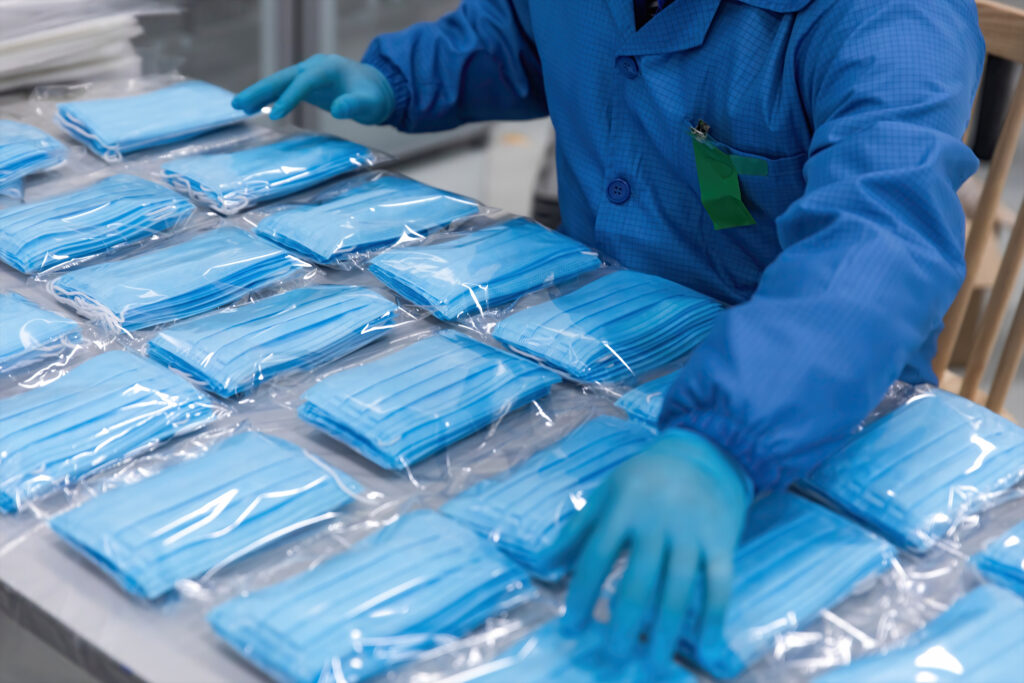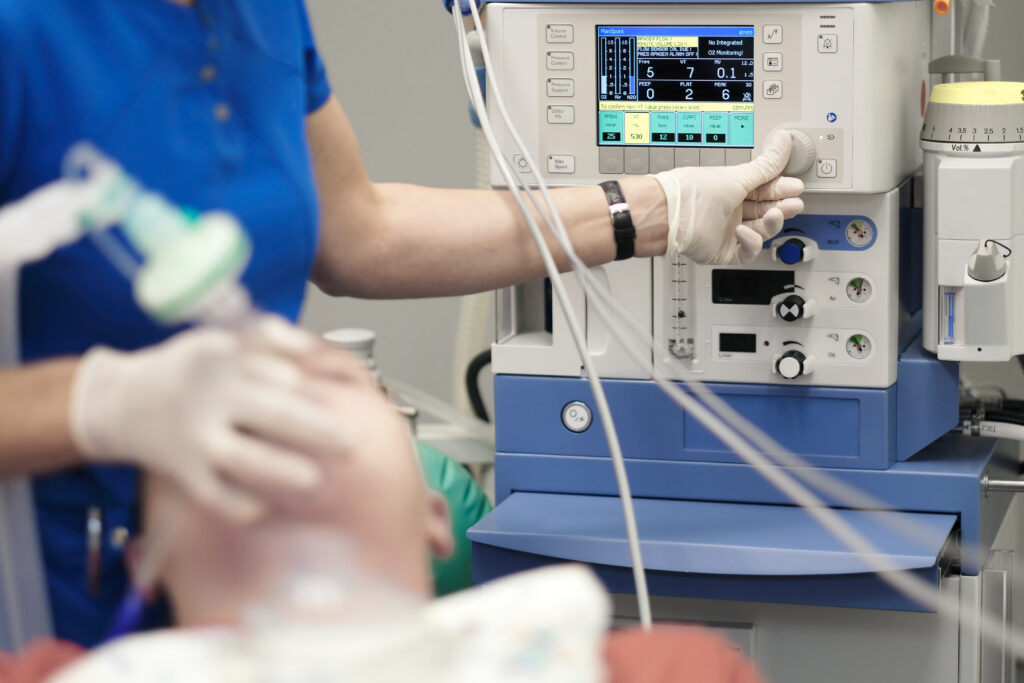Health services are increasingly being encouraged to reduce their carbon footprint.
The Intergovernmental Panel on Climate Change (IPCC)’s most recent report outlines the significant threat posed to human health by the climate crisis.
In turn, health care professionals and organisations are recognising the effect of health care on emissions.
Professor Anthony Capon, Director of the Monash Sustainable Development Institute, and the world’s first Professor of Planetary Health, said health services are increasingly being encouraged to reduce their carbon footprint.
“The environmental footprint of health care is not sufficiently well understood,” Professor Capon said.
“The bottom line is that, as we provide health care, we’re also harming health through its environmental impact.”
The first ever assessment of Australia’s health care carbon footprint, led by Associate Professor Arunima Malik (University of Sydney) in 2018, estimated that 7% (35 772 kilotonnes of carbon dioxide [CO2]) of Australia’s total emissions were due to health care.
“During the [coronavirus disease 2019 (COVID-19)] pandemic, [health care’s environmental footprint] became a lot more evident in terms of the waste from personal protective equipment (PPE) – masks, plastic face shields, single use gowns, for example,” said Professor Capon.
“But we also need to pay attention to carbon emissions from health care.”

“Notably, a lot of the health harms [from climate change and the environmental footprint of health care] occur in low and middle-income countries. Most of the pollution from production of the single-use plastics and metalware we consume in Australian health care occurs in countries in the wider Asia Pacific region,” Professor Capon said.
“Importantly, we should also be concerned about modern slavery in these supply chains,” he said.
“Accounting for the environmental footprint of health care needs to become part of routine work for doctors and other health care workers,” Professor Capon said.
“This will require a change of mindset for health services,” he said. “Understandably, health workers are focused on doing the best we can for our patients.”
“Some may believe it’s reasonable to leave these issues to the Department of Environment. But we all have to play our part,” Professor Capon said.
The invisible effect of anaesthetic gases
Yannick De Silva is a fourth-year medical student at the University of Newcastle.
He began to research the impacts of health care on climate while studying sustainable health care, and has written about the impacts of gaseous emissions from anaesthesiology for InSight+.
Mr De Silva focused on the carbon footprint of nitrous oxide (N₂O) and desflurane (C3H2F6O), both of which are commonly used by anaesthetists.
“More than 95% of the anaesthetic gases used during surgery are exhaled and indirectly vented into the atmosphere,” Mr De Silva said.
“Desflurane … is thousands of times more potent than CO2 and is a significant contributor to greenhouse gas emissions.”

Mr De Silva said that the minimal alveolar concentration (MAC)-hour – using the drug to anaesthetise a patient for one hour – creates significant greenhouse gas emissions.
“One MAC-hour for desflurane is the equivalent of driving 320 kilometres, in terms of the CO2 emissions. So, from Sydney to Canberra,” he said, adding that the MAC-hour carbon equivalent of nitrous oxide is 95 kilometres.
Mr De Silva said that the effect of using both drugs together (nitrogen dioxide [NO2] is commonly used with more volatile gases due to the second-gas uptake effect) causes exponential effects, both in the long and short term.
“When used as a combination, desflurane and N2O have significantly higher global warming potential compared with other flurane-N2O combinations,” Mr. De Silva said.
“They work differently. N₂O has long term effects on the ozone layer. Desflurane has a shorter term impact and can increase greenhouse gas emissions, which is what essentially causes higher temperatures,” Mr De Silva said.
Mr De Silva refers to alternatives such as recycling unmetabolised exhaled gas using a closed circle system and an intravenous anaesthetic agent.
According to an evidence summary by Clifford Shelton at Manchester University in 2022, sevoflurane and isoflurane have smaller atmospheric impacts than desflurane and N₂O.
Hospitals dropping the desflurane
Commitment to a reduction in emissions is also happening more frequently at the organisational level.
Last month, Cairns and Hinterland Hospital and Health Service in Queensland announced that it will cease use of desflurane in its operating theatres.
“[It] was an easy decision for us to make to help make our operating theatres and hospital more environmentally sustainable, without compromising patient care,” Anaesthetist Dr Dan Lazzari, from the Cairns Hospital’s Theatre Environmental Committee, said in the announcement.
Dr Colin Urquhart, also a Cairns Hospital anaesthetist, said that the decision made financial sense.
“[Desflurane] is a more costly anaesthetic compared to the alternatives. Removing it from use will not only reduce our hospital’s carbon footprint, but also reduce operational costs,” Dr Urquhart said.
Professor Capon says that organisations are making big moves, and health care professionals can find resources and sign the Global Green and Healthy Hospitals Health Care Climate Challenge pledge online.
Professor Capon said that health care organisations are acting around the world.
“The National Health Service in the United Kingdom is the first health organisation say that they want to be a net zero system,” Professor Capon said.
Subscribe to the free InSight+ weekly newsletter here. It is available to all readers, not just registered medical practitioners.

 more_vert
more_vert
Alfred Hospital Department of Anaesthesiology and Perioperative Medicine dropped desflurane several years ago due to environmental concerns.
As a retired anaesthetist, I find it difficult to understand why you would not use sevoflurane and propofol as the mainstay for all anaesthetics.
Not every new anaesthetic agent is advantageous.
For 40 years I practised low flow anaesthesia using halothane and then sevoflurane using a Goldman vapouriser. When you have to pay for your own anaesthetic agents you learn to economise.
A seeming elephant in the room is the environmental impact of wasteful or unnecessary healthcare. Eliminating inappropriate or unnecessary care is a quadruple gain- reduced use of materials that generate waste, reduced burdensome care for individual patients, reduced costs in healthcare and resources freed up for other needs. Measures to improve environmental impacts of specific episodes of care are laudable and necessary but genuinely choosing wisely is environmentally smart healthcare. This is a difficult matter to tackle but one that deserves our attention.